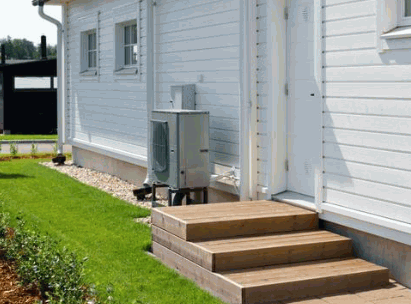Air source heat pumps are becoming an increasingly popular choice for efficient heating and cooling in homes.
But what exactly are they, and how do they work? This article explores the different types of air source heat pumps, including air-to-air, air-to-water, and hybrid systems, and discusses their numerous benefits, including energy efficiency and cost savings.
It will also address potential drawbacks, installation processes, and maintenance tips to help you determine if an air source heat pump is right for your home.
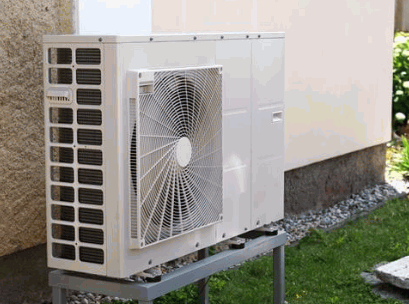
What Is An Air Source Heat Pump?
An Air Source Heat Pump (ASHP) is an energy-efficient system designed to provide both heating and cooling for residential and commercial spaces. By harnessing ambient air through its outdoor unit, this innovative technology utilizes refrigerant flow and heat exchangers to extract thermal energy from the air, converting it into either warm indoor air during the heating mode or cool air during the cooling mode. ASHPs are increasingly popular in various climates, including areas like Minnesota, where they can significantly reduce energy consumption and lower energy bills compared to traditional heating systems.
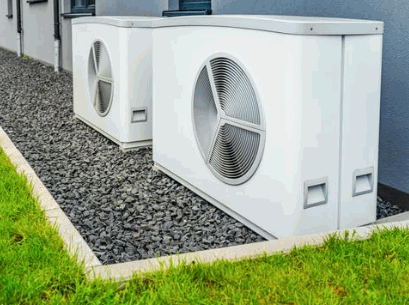
How Does An Air Source Heat Pump Work?
An Air Source Heat Pump operates by using a refrigerant that circulates through its system, facilitating the transfer of thermal energy between indoor and outdoor environments, allowing for efficient temperature regulation regardless of the season. This remarkable technology plays a crucial role in how homes maintain comfort, whether it’s chilling the air in hot summers or warming it during frigid winters, as it effectively absorbs heat from one source and releases it into another. Understanding how heat flows is key to optimizing energy efficiency.
In heating mode, the pump extracts heat from the outside air, even in low temperatures, and transfers it indoors through the heat exchanger. The refrigerant gas, which evaporates at low temperatures, absorbs thermal energy and then compresses it to raise its temperature before circulating it into the living space.
Conversely, in cooling mode, the refrigerant absorbs heat from indoor air and releases it outside, effectively lowering the interior temperature and improving overall indoor air quality. The
- type of refrigerant
- flow rates
- flow configuration
all significantly impact efficiency and indoor air quality. A well-functioning heat exchanger not only enhances performance but also filters out contaminants and humidity, contributing to a healthier environment by improving indoor air quality. The specificity of the refrigerant used helps optimize thermal exchange, making the entire system more energy-efficient.
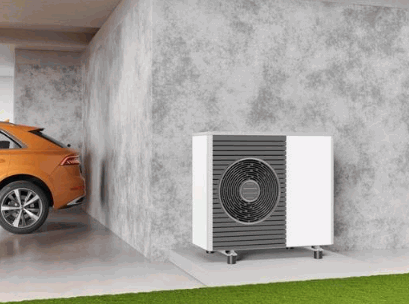
What Are The Different Types Of Air Source Heat Pumps?
There are three main types of Air Source Heat Pumps, each catering to different heating and cooling needs: Air-to-Air Heat Pumps, Air-to-Water Heat Pumps, and Hybrid Heat Pumps. Air-to-air systems circulate indoor air, while Air-to-Water systems deliver heated water for domestic hot water needs or to radiators and underfloor heating, optimizing the heating capacity and energy efficiency based on environmental conditions. Hybrid systems combine traditional heating methods, such as gas heating or electric resistance, with air source technologies to maximize comfort and energy savings.
Air-to-Air Heat Pumps
Air-to-Air Heat Pumps are designed to transfer heat between the outdoor air and the indoor environment, effectively providing heating in winter and cooling in summer. These versatile systems utilize a sophisticated mechanism, enabling them to function optimally even in varying climatic conditions.
In heating mode, the Air-to-Air systems absorb heat from the outdoor air, even at low temperatures, and transfer it indoors through the indoor air handlers. In contrast, during warmer months, the process is reversed, allowing these systems to draw warm air from the inside and release it outside.
The primary components, including the outdoor unit and multiple indoor air handlers, work in unison to deliver a comfortable atmosphere. Their design promotes energy efficiency, significantly lowering energy bills while ensuring adequate heating in cold climates, especially when combined with effective building insulation.
- Outdoor Unit: Extracts heat from the air
- Indoor Air Handlers: Distribute conditioned air
By effectively regulating indoor temperatures, they provide a sustainable solution for year-round comfort, reducing reliance on conventional heating systems.
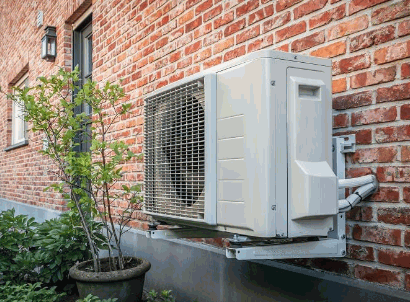
Air-to-Water Heat Pumps
Air-to-Water Heat Pumps utilize outdoor air to generate hot water for domestic use or to provide heating through radiators and underfloor systems, effectively transforming the chilly air outside into a valuable resource that contributes to overall home comfort and efficiency. These innovative systems harness ambient temperatures, even in colder climates, to heat water, which can then be circulated throughout the household, ensuring that both space heating and water heating needs are met seamlessly and efficiently.
Operating under principles of thermodynamics, Air-to-Water systems extract heat from the outdoor air, even at lower temperatures, thanks to advanced refrigerant types and compressor technology. This process enhances their heating capacity, making them suitable for diverse applications, from residential buildings to commercial setups.
In terms of operational efficiency, these systems often outperform traditional heating solutions, such as gas or electric furnaces, by leveraging renewable energy from the air, thus significantly reducing energy consumption.
- Lower energy bills: The efficient operation of Air-to-Water systems translates into reduced energy expenses, giving homeowners more control over their monthly bills.
- Environmental benefits: Utilizing a renewable source minimizes greenhouse gas emissions compared to conventional heating options.
Their versatility makes Air-to-Water Heat Pumps an excellent choice for modern households looking to optimize comfort and savings.
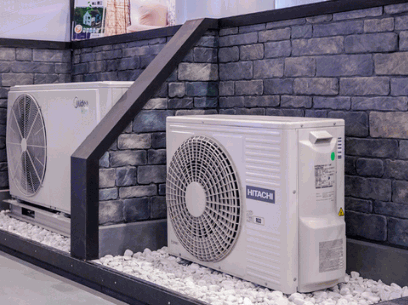
Hybrid Heat Pumps
Hybrid Heat Pumps combine the benefits of air source technology with traditional heating methods, such as electric resistance or gas heating, allowing for enhanced energy efficiency and flexibility.
These systems ingeniously adjust their operational modes depending on the prevailing outdoor conditions, ensuring optimal performance regardless of temperature fluctuations. By dynamically switching between energy sources, they capitalize on the most cost-effective option available. This adaptability not only leads to considerable cost savings but also enhances overall comfort in varying weather conditions.
- For instance, during milder months, an air source may suffice, while colder climates benefit from a secondary gas heater.
- In regions with fluctuating energy prices, utilizing a hybrid system enables users to take advantage of cheaper energy options.
Scenarios such as residential buildings or commercial spaces with variable heating demands showcase how hybrid systems thrive, often leading to reduced carbon footprints and improved energy efficiency.
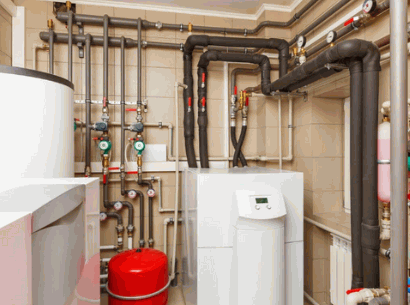
What Are The Benefits Of Using An Air Source Heat Pump?
Using an Air Source Heat Pump offers numerous benefits, including exceptional energy efficiency, significant cost savings on energy bills, and a reduced environmental impact compared to conventional heating and cooling systems, thereby minimizing CO2 emissions. These systems are versatile enough to provide comfortable indoor temperatures year-round, making them suitable for various applications, including residential and commercial spaces. Additionally, their reliance on ambient air as an energy source contributes to lower CO2 emissions and allows for enhanced energy independence.
Energy Efficiency
One of the primary advantages of Air Source Heat Pumps is their energy efficiency, often measured by the Coefficient of Performance (COP) and seasonal efficiency ratings.
Understanding these metrics, such as COP ratings, is crucial, as they indicate how effectively an ASHP can convert electricity into heating or cooling energy. The COP, for instance, represents the ratio of useful heating or cooling provided to the energy consumed, with higher values indicating better performance.
Seasonal efficiency takes into account variations over a typical heating season, offering a more realistic view of energy use and savings. For example, a unit with a COP rating of 4 means it produces four units of heating for every unit of electricity consumed.
- This significant efficiency not only reduces monthly energy bills but also has a lower environmental impact by decreasing carbon dioxide and nitrogen oxide emissions, appealing to eco-conscious consumers.
- Understanding these ratings helps homeowners make informed choices during installation, ultimately leading to substantial long-term savings.
Integrating these principles into purchasing decisions gives the power to users to select systems that will pay off over time.
Cost Savings
The implementation of Air Source Heat Pumps can lead to significant cost savings on energy bills, making them an attractive option for homeowners and businesses alike.
By harnessing renewable energy, these systems not only decrease energy consumption but also qualify users for various government incentives designed to promote sustainable energy solutions.
Although the initial investment may seem daunting, with Air Source Heat Pumps generally requiring higher upfront costs compared to traditional systems, the long-term savings enjoyed can often compensate for this expense. Maintenance costs are typically lower due to fewer moving parts and reduced wear and tear.
As energy bills decline, homeowners and businesses can enjoy a more manageable financial landscape, ultimately offsetting installation and upkeep costs associated with HVAC installation and maintenance practices.
- Potential government incentives can further lower the effective investment.
- Long-term savings from lower energy consumption greatly enhance the overall value.
- Ensure regular maintenance to maximize efficiency and savings, particularly in systems like mini-split systems.
Explore further: How Much Does Ground Source Heat Pump Cost
Environmentally Friendly
Air Source Heat Pumps are considered environmentally friendly due to their ability to significantly reduce CO2 emissions by utilizing renewable energy sources, such as ambient air, making them an ideal choice for those seeking to lessen their carbon footprint while maintaining efficient home heating solutions.
By harnessing the abundant heat from the environment, these systems drastically lower reliance on fossil fuels, which not only helps in conserving natural resources but also contributes to a healthier planet. Switching to ASHPs can lead to a remarkable drop in greenhouse gas emissions compared to conventional heating systems. Additionally, understanding the heat pump efficiency is crucial for maximizing benefits.
The advantages extend beyond just energy efficiency; these innovative units also offer enhanced humidity control, thereby improving indoor air quality. A balanced humidity level can help reduce the proliferation of allergens and mold, creating a more comfortable living space for occupants.
By choosing Air Source Heat Pumps, users are embracing a modern heating solution that prioritizes both sustainability and well-being.
Versatility
The versatility of Air Source Heat Pumps allows them to function effectively in various climates, providing both indoor heating in winter and cooling in summer.
Their unique ability to harvest thermal energy from the outside air makes them suitable for a range of settings, enhancing energy efficiency and sustainability. In residential homes, they can seamlessly connect with existing hot water systems, offering a reliable source of hot water while drastically reducing energy bills. For instance, a family in a temperate zone can enjoy comfortable heating during frigid winters and cool air in the sweltering summer months, all while benefiting from green technology.
- In commercial buildings, large-scale installations of ASHPs can power heating and cooling systems, serving to cut operational costs significantly.
- Hotels and resorts have utilized this technology to provide guests with comfortable accommodations year-round, showcasing their versatility and potential for energy savings.
Real-life scenarios illustrate how businesses prioritize sustainability, with many opting for ASHP solutions as part of their green initiatives, not only meeting client demands but also enhancing their brand image in the market.
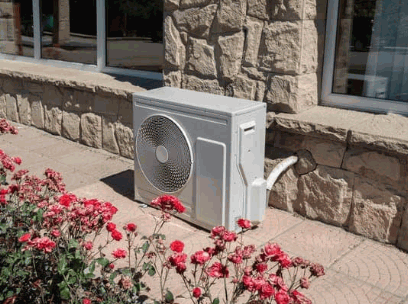
What Are The Potential Drawbacks Of Using An Air Source Heat Pump?
Despite their numerous benefits, Air Source Heat Pumps come with potential drawbacks, including higher initial costs, noise levels, and dependence on outside temperature, which may affect their performance in extreme conditions.
Initial Cost
The initial cost of purchasing and installing an Air Source Heat Pump can be a significant consideration for potential buyers.
When evaluating this investment, it’s essential to consider several factors that contribute to the overall expense. The installation expenses can vary considerably based on the complexity of the setup and the specific components required for optimal performance. Buyers should also assess the efficiency of the heat pump itself, noting that these systems typically have higher upfront costs compared to traditional heating solutions.
- Installation complexity, which can lead to higher labor costs.
- Quality of materials and components, which contribute to durability and efficiency.
- Potential rebates or incentives that can offset initial expenses.
Although the initial investment may seem daunting, it’s crucial to understand that these costs can translate into significant long-term energy savings and efficiency. Over time, an Air Source Heat Pump can not only lower monthly utility bills but also enhance overall comfort compared to older heating systems.
Noise Level
Noise levels generated by the outdoor unit of an Air Source Heat Pump can be a concern for some homeowners, especially in quiet neighborhoods, where the tranquility of the surroundings can be disrupted by loud machinery. This issue often leads many to consider the impact of these systems on their living environment, particularly if they have children or elderly family members. Understanding the nuances of operational sound is crucial in making an informed decision about heat pump installation.
Several factors contribute to the noise levels of heat pumps, including the compressor design, fan configuration, and housing materials. Manufacturers are increasingly aware of these concerns and have made significant strides in engineering quieter units. For instance, some brands utilize innovative technologies such as variable speed compressors, which can operate at lower sound levels during milder weather conditions.
- When selecting a quieter model, consider looking for units labeled with a low decibel rating, ideally below 60 dB.
- Integrating noise-reduction features such as insulated cabinets or sound blankets can further minimize disturbances.
- Consulting with professionals for proper installation can also play a crucial role in reducing vibrations and associated noise.
By taking these factors into account, homeowners can enhance their comfort while maintaining a peaceful living space.
Dependence On Outside Temperature
Air Source Heat Pumps may experience reduced efficiency in extremely cold climates due to their dependence on outside temperature for optimal performance and may require additional solutions like a dual-fuel system for better performance.
As the mercury drops, these systems struggle to extract sufficient heat from the chilly air, making it imperative for homeowners to understand how outside temperatures influence their operation. In fact, when temperatures plummet, heat pumps can lose up to 25% of their heating capacity, which may necessitate the use of supplemental heating systems. This can include electric resistance or gas heating systems that kick in to maintain comfortable indoor temperatures.
- Homeowners should consider the average winter temperatures in their area and evaluate the effectiveness of supplemental heating options if needed.
- It’s advisable to invest in a dual-fuel system, which employs both an ASHP and another heating method.
- Regular maintenance of the heat pump can also help improve its efficiency.
By planning ahead and being aware of these conditions, individuals can ensure a more reliable and efficient heating solution that meets their needs, regardless of how low the temperature drops outside.
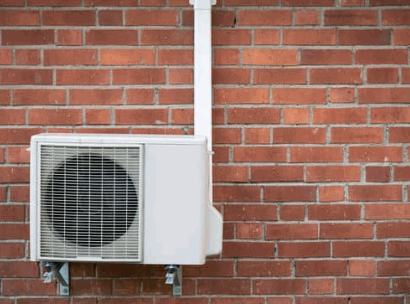
How Is An Air Source Heat Pump Installed And Maintained?
The installation and maintenance of an Air Source Heat Pump are crucial for its optimal performance and energy efficiency, requiring professional HVAC installation and regular maintenance practices to ensure longevity.
Installation Process
The installation process for an Air Source Heat Pump involves several critical steps to ensure proper function and performance, beginning with the placement of the outdoor unit and the configuration of the indoor air handlers.
To successfully carry out the installation, one must first undertake site preparation, which includes assessing the location of the outdoor unit and ensuring adequate space around it for airflow. The ground must be level and clear of debris.
Next, the team should focus on unit placement; this involves securely mounting the outdoor unit and ensuring it is at a safe distance from any obstructions, such as walls or plants, that could affect its efficiency.
Once positioned correctly, moving on to the next phase involves connecting system components. This includes refrigerant lines, electrical connections, and drainage lines, which must be performed according to the manufacturer’s specifications to prevent future issues.
After all connections are made, it’s essential to thoroughly test the system. This testing not only checks for leaks and proper operation but also confirms that the Air Source Heat Pump is performing optimally within the installed setup, ensuring comfort and energy efficiency.
Maintenance Requirements
Regular maintenance is vital for the efficient operation of an Air Source Heat Pump, ensuring that the system maintains optimal energy efficiency and minimizes noise levels. Failure to conduct regular upkeep can lead to decreased performance and increased energy bills.
To achieve the best results, it’s essential to implement a routine maintenance schedule that includes several key practices that can improve heat pump efficiency.
- **Routine Inspections:** Periodic checks allow for early detection of potential issues.
- **Cleaning of Filters:** Clogged filters can significantly reduce airflow and efficiency.
- **Checking Refrigerant Levels:** Proper refrigerant levels are crucial for the system’s effectiveness.
- **Adjusting Thermostat Settings:** Optimizing thermostat settings can further enhance energy efficiency.
The significance of professional servicing cannot be overstated. Engaging skilled technicians ensures that any underlying issues are appropriately addressed, which in turn leads to prolonged life and optimal operational performance of the unit.
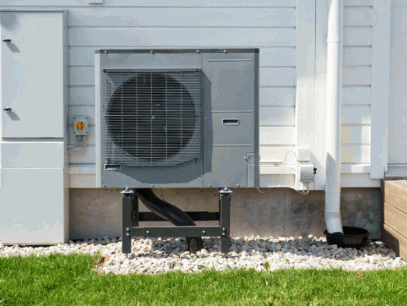
Is An Air Source Heat Pump Right For Your Home?
Determining if an Air Source Heat Pump is the right choice for your home involves several key factors, including climate considerations, the size and layout of your home, and energy costs associated with your current heating system.
Climate Considerations
Climate considerations are essential when evaluating the effectiveness of an Air Source Heat Pump, particularly in colder regions where efficiency may vary during the heating season.
In these areas, like Minnesota, the transition from mild to severe winter temperatures can significantly impact how well these systems operate. During moderate weather, the system performs admirably, leveraging ambient heat to warm homes effectively. As temperatures drop, the efficiency of an Air Source Heat Pump can diminish, necessitating additional backup heating to maintain comfortable indoor environments.
- When facing temperatures below freezing, performance may decrease.
- Localized climate conditions often dictate the need for supplemental heating sources, especially in extremes.
Understanding these dynamics is crucial for homeowners seeking optimal performance and energy savings from their heating solutions.
Size And Layout Of Your Home
The size and layout of your home play a significant role in determining the appropriate Air Source Heat Pump system to install, directly affecting its heating capacity and energy consumption. Understanding these factors can lead to increased efficiency and comfort.
Assessing the dimensions of your living space is essential; it not only helps in choosing the right model but also ensures that the system operates at its best. Here are some considerations to effectively evaluate your home:
- Room Sizes: Measure each room where heating is needed, noting any large or open areas that may require more power.
- Layout: Identify the flow of air between rooms; open layouts often allow heat to circulate better than isolated spaces.
- Insulation Quality: Check insulation levels to gauge how much heat retention your home achieves (effective insulation can significantly improve system efficiency).
To further inform your decision, conducting a thorough energy assessment will provide valuable insights into potential energy savings and help pinpoint any areas that require improvement.
Energy Costs
Evaluating energy costs is crucial when considering an Air Source Heat Pump, as its potential to lower energy bills can significantly impact overall household expenses.
Understanding the dynamics of energy pricing can help homeowners make informed decisions. Key factors that contribute to energy costs include local utility rates, seasonal demand fluctuations, and the efficiency of the heating system in use. When comparing traditional heating solutions, such as furnaces and electric heaters, Air Source Heat Pumps (ASHPs) show promise due to their ability to harness ambient heat, providing warmth even in colder months.
- Long-term Savings: Homeowners may find that, despite a higher initial investment, ASHPs lead to reduced energy costs over time.
- Energy Efficiency: Their higher efficiency ratings outshine conventional systems, resulting in a lower carbon footprint.
Thus, ASHPs not only help slash expenses but also promote sustainable energy practices.
